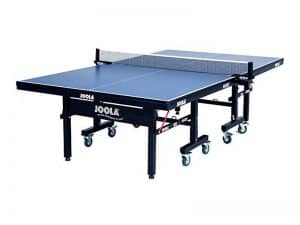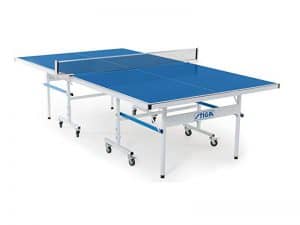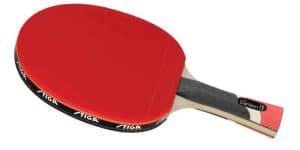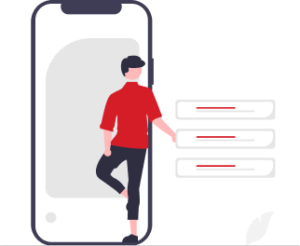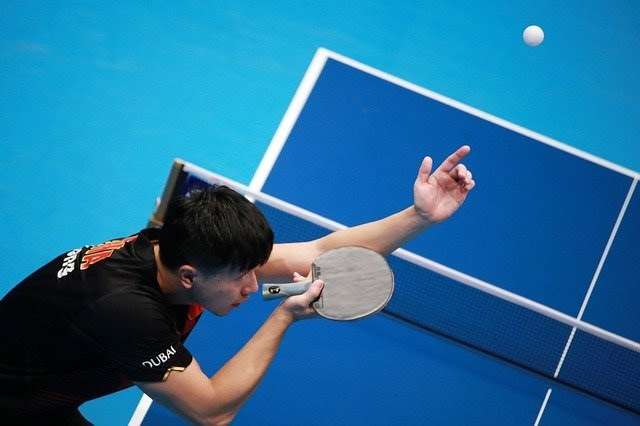Paddle Tennis vs. Pickleball: What Are the Differences?
- Alex Horscroft
- Last updated
What’s the difference between paddle tennis and pickleball? These sports have many differences, from their equipment to the courts and the volleying rules.
In this post, I cover all the major differences and similarities between paddle tennis and pickleball. Hopefully, it will motivate you to give each of them a try. They are both a ton of fun to play!
Table of Contents
Paddle Tennis vs. Pickleball: Head-to-Head Comparison
| Paddle Tennis | Pickleball | |
| Court size | 20 ft x 50 ft | 20 ft x 44 ft |
| Points per game | 4 points (0, 15, 30, 40, game) | 11 points |
| Matches are played to | Best of 5 sets | Best of 3 games |
| Singles/doubles | Mostly doubles | Mostly doubles |
| Serving | Underarm | Underarm |
| Second serves | No | No |
| Point criteria | None | Must be serving |
| Volleying |
|
|
| Paddles | Oval-shaped, stringless, perforated, memory-foam cores | Rectangular-shaped w/ rounded edges, stringless, non-perforated, rigid cores |
| Balls | Rubber core, felt exterior, moderate pressure | Rigid plastic w/ perforations |
What Is Pickleball?
Pickleball is an indoor and outdoor sport rapidly gaining popularity in the US. In fact, it was named the fastest-growing sport there from 2021 to 2022, garnering more than 36.5 million players.
Pickleball’s routes originated in Washington. A man named Joel Pritchard set up badminton for his family but couldn’t find a shuttlecock. He tasked his children with coming up with a game of their own. Pickleball was what resulted.
Like traditional tennis, pickleball is a type of racket sport with a large playing area and a central net to split the court into two sections.
Read More: Pickleball Rules
What Is Paddle Tennis?
Paddle tennis, or paddle ball, is a much lesser-known sport than pickleball, so much so that it was rebranded to Pop Tennis in 2015 to try and boost its popularity. It seems to have worked somewhat, and many more people are starting to play the game.
Despite paddle tennis lagging behind pickleball, it is actually the older of the two sports. Paddle tennis was created in 1915 by Frank Peter Beal, an episcopal minister. He developed the game as a fun sport for children in his neighborhood.
Paddle tennis resembles a smaller version of tennis with stringless rackets. Think tennis on a badminton court with underarm serves. It’s a lot like that!
Pickleball vs. Paddle Tennis Similarities
Court size
While pickleball vs. paddle tennis court dimensions are not the exact same, they are pretty close. Pickleball court dimensions are identical to badminton courts. They measure 20 feet x 44 feet, and you can find them indoors or outdoors.
Paddle tennis courts are marginally larger, and you also play the game on indoor or outdoor courts made of similar surface materials to tennis.
The courts measure 20 feet x 50 feet. This makes them far smaller than padel courts, which measure 66 ft x 33 ft.
Pickleball Versus Paddle Tennis Serving
I find serving is remarkably similar for both sports. Unlike tennis, you serve the ball underarm, so serves are far less deadly and more just a means of getting the rally going.
Furthermore, there are no second serves like in tennis unless a let occurs. This further reinforces that you should utilize safe serves.
You can serve straight out of your hands or perform a drop serve for both sports. However, for paddle tennis, once you pick a service method, you cannot switch until the game has concluded.
Mainly a Doubles Game
Paddle tennis and pickleball are fairly quick racquet sports involving working angles to secure points. They are very difficult to play solo as covering the entire court yourself is challenging.
For this reason, players of both games predominantly play doubles. However, if you’re agile and fit, I recommend giving singles a go.
Double Bounce Rule
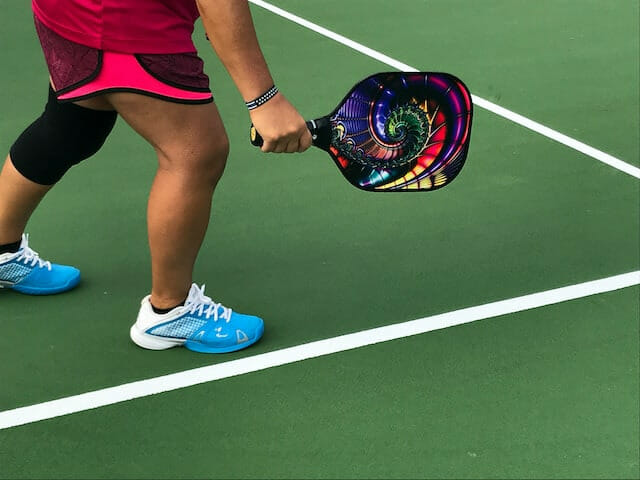
The double bounce rule is fairly rare, but both pickleball and paddle tennis have it. The rule prohibits players from volleying the ball until the fourth strike in a point (including the serve). This helps prolong rallies to make the game more entertaining. Without the rule, players would rush forward to play aggressively.
However, I should note that paddle tennis only uses this rule when playing singles. So if you’re playing doubles paddle tennis, feel free to rush the net after serving, as the double bounce rule is not in effect.
Read More: Pickleball vs. Tennis
Paddleball vs. Pickleball Differences
Scoring
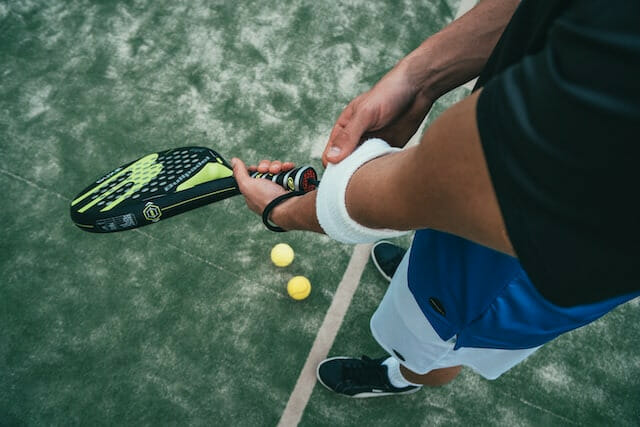
Paddle tennis is easy to score for most people as it uses the same scoring system as tennis. Each game is first to four points with a two-point clearance, and games are best of five sets.
As for pickleball, the scoring system is a little more complex. You play games first to 11, like for table tennis, but you can only score if you are on the serving team. Matches are first to 2 games; if both teams are drawing 1-1, the final game is first to 5 points with two points of clearance.
There is also a difference between pickleball and paddle tennis in how the umpire calls the score (for doubles). This is due to the pickleball service sequence, which we will touch on later. Players and fans need to know whether players 1 or 2 are serving on a team. Therefore, when the umpire calls the score, it includes the points followed by the serving number, e.g., 5-3-2.
Serving Sequence
Like paddle tennis follows tennis scoring, it also follows the tennis serving sequence. So, if you’re familiar with tennis, becoming accustomed to paddle tennis is as easy as pie. Each player gets a service game, after which it switches to the opponent.
Pickleball, however, is more challenging to follow. As mentioned earlier, for doubles, the serving number follows the score of either 1 or 2. Games start with the second server for fairness because serving gives that team an advantage. The way it works is that unless it is the start of a game, each player on a team gets to serve until they lose a point.
Serves begin on the right-hand side; the same applies to side-outs when a team loses its serve to the opposing team. Upon each successful serve, the server switches between the left and right-hand sections of the court. When they lose a point, it switches to their partner.
The singles serving sequence is much easier to follow. For these games, you serve on the right-hand side when your score is even and on the left when your score is odd.
Volleying
The non-volley zone, or kitchen as it is informally known, is a small area on either side of the net that forbids volleying. It is a feature unique to pickleball and drastically changes the dynamics of the sport. Pickleball players cannot volley here, so they are forced to stand outside the kitchen instead. This way, they can smash balls that drift long but still pick up shorter balls.
Paddle tennis, by comparison, has no such area. This means players can freely rush the net (unless they are playing doubles – double bounce rule) to play offensively. As such, I find paddle tennis is much faster than pickleball, and you don’t see nearly as many drop or dink-like shots.
Rackets
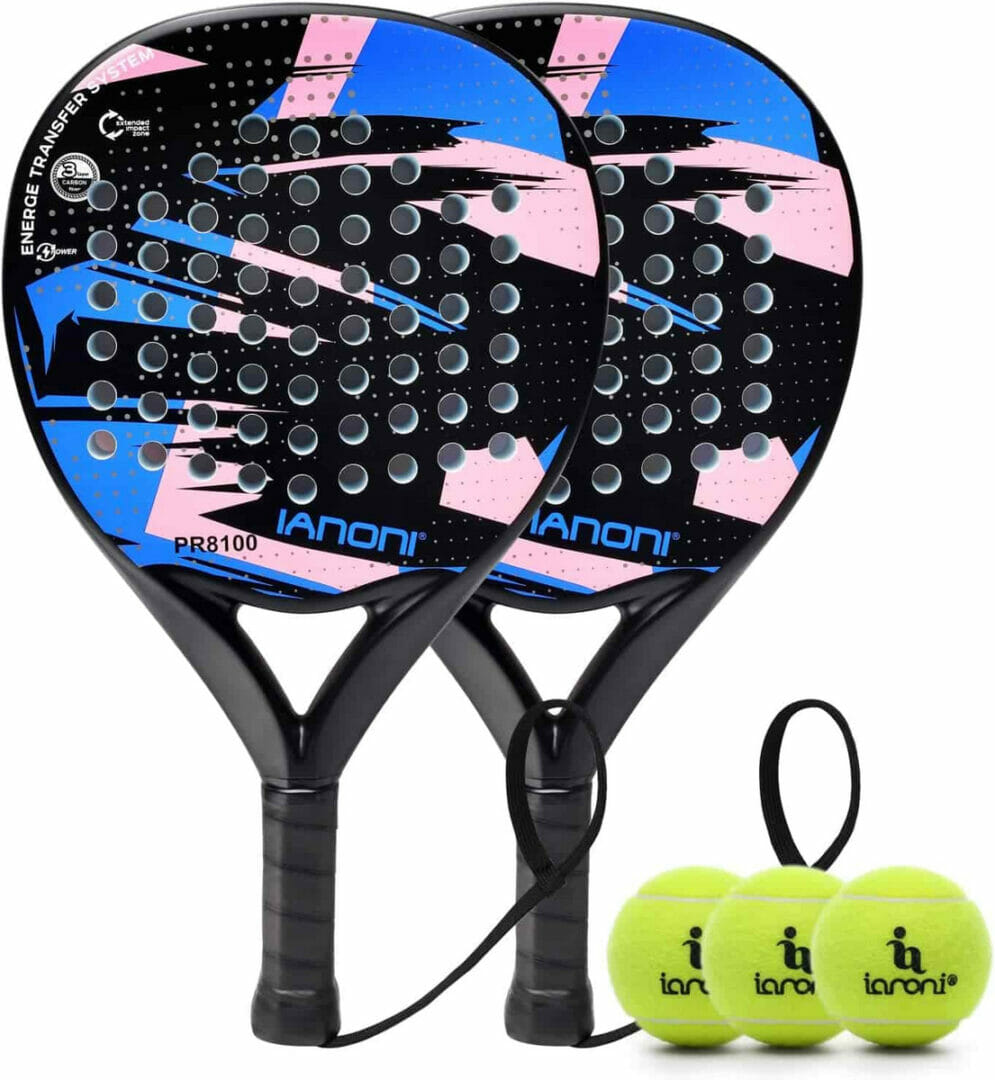
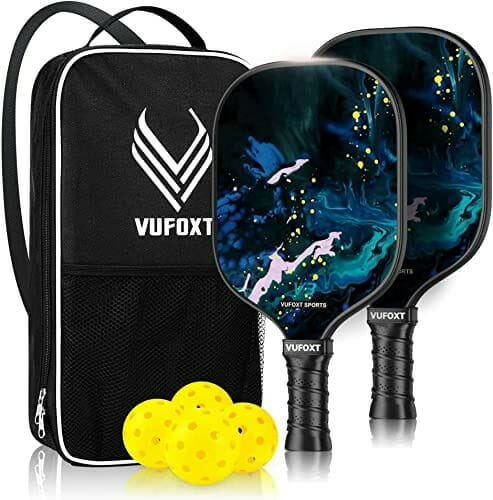
If you were squinting and looking from a distance, perhaps you could confuse pickleball and paddle tennis rackets. However, besides the general size, form, and shape similarities, the rackets are quite different.
Paddle tennis paddles are stringless and oval-shaped just like those used for padel and platform tennis. They also have perforations and feature an EVA foam core. By comparison, pickleball paddles are more rectangular-shaped with rounded edges. They are also stringless but do not feature perforations or memory foam. Instead, they are more rigid and utilize materials such as Nomex or polypropylene for their cores. They are also not quite as thick as paddle tennis paddles and do not feature a gap where the handle meets the face (like tennis rackets).
Balls
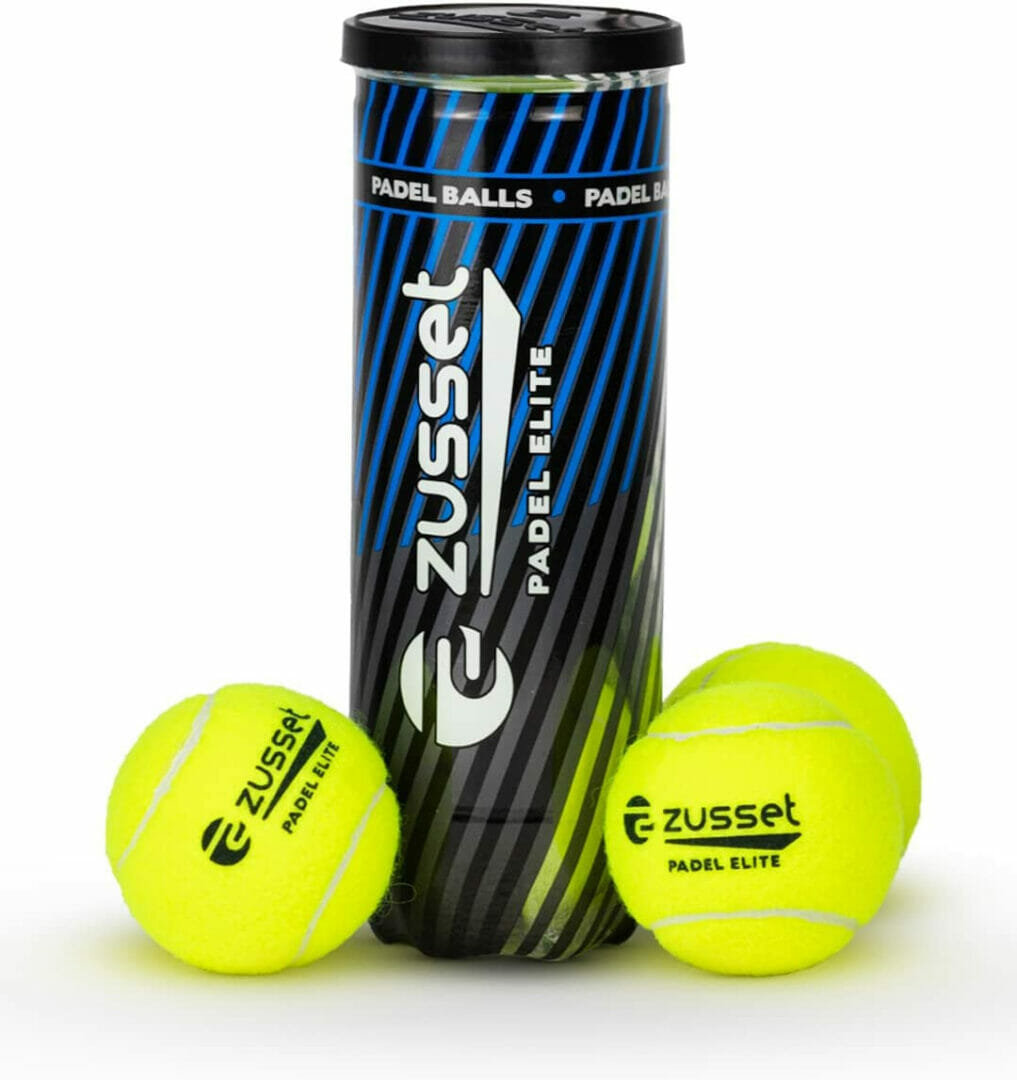
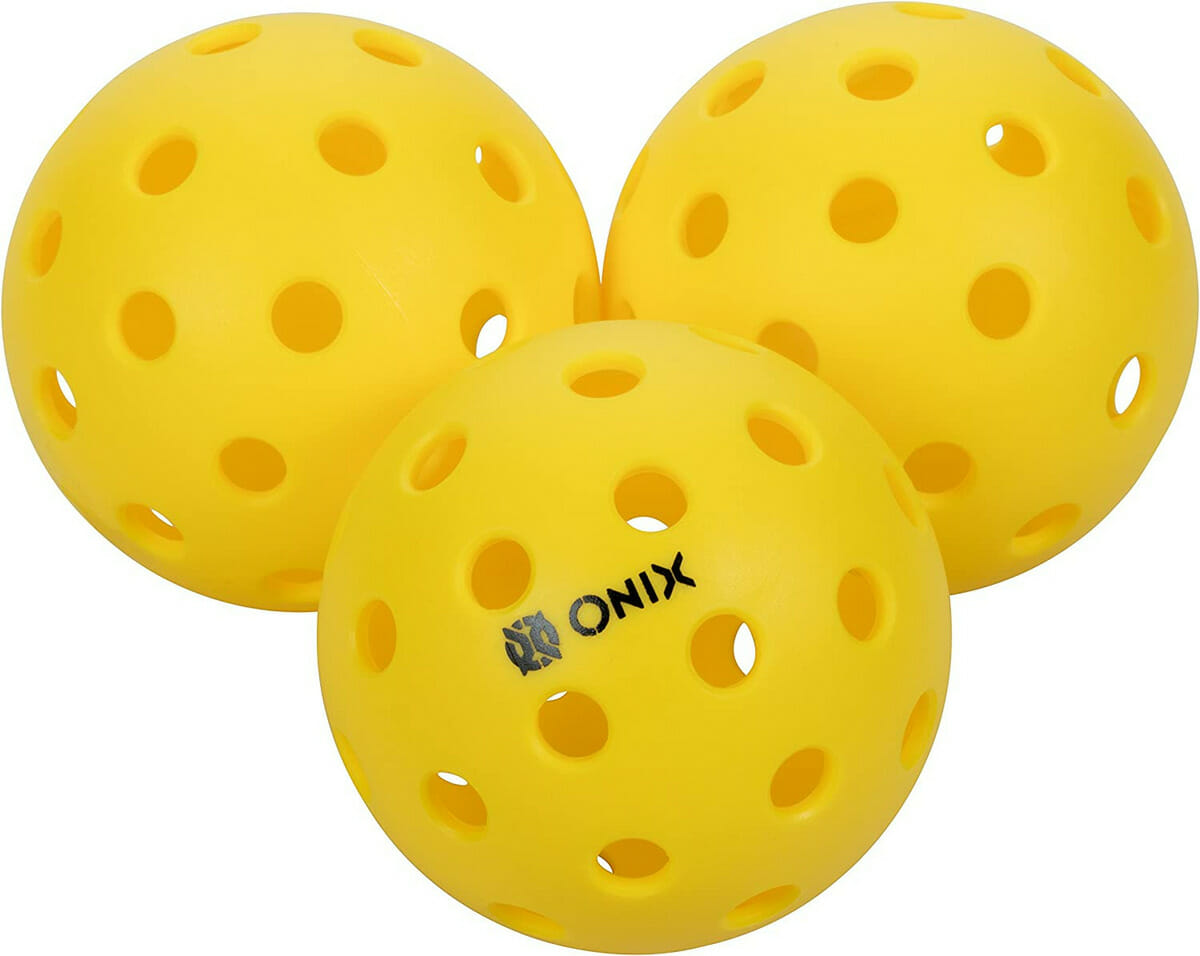
As the difference between paddle ball and pickleball rackets is sizeable, it should be no surprise that the balls are also very different. Paddle tennis uses balls that are very similar to standard tennis balls. They have a rubber core with the same fuzzy felt exterior.
The only difference is the reduced air pressure. The reason for this is that the court is small, and balls with reduced air pressure help slow the game down somewhat. Otherwise, rallies would be over too quickly. Each paddle tennis ball is color-coded. The official green ball contains 75% of the air pressure that tennis balls have. On the other hand, the slower orange balls have 50% of the air pressure of tennis balls.
Pickleball balls do not use rubber at all. Instead, they are made from rigid plastic. They produce a loud sound when struck; this is one of the sport’s main critiques, as it’s too loud for some areas. This is recently proving an issue in Essex County for some homeowners, and may ultimately result in legal action.
What’s interesting is that paddle tennis uses perforated rackets and unperforated balls. The opposite is true with pickleball. Pickleball’s perforated plastic balls have either 40 or 26 holes depending on whether they are for indoor or outdoor use. They have a somewhat similar appearance to wiffle balls, although they have more holes and are much firmer.
Fitness Demands
You might be pleased to know that pickleball and padel tennis are not particularly tiring sports just like platform tennis. The likes of badminton, tennis. and padel are far more demanding in my experience.
But there is certainly a less taxing sport of the two, and that’s pickleball. The primary reason for this is the non-volley zone. By prohibiting smashes near the net, many rallies end up in a slow dink war. Padel tennis, by comparison, allows volleys anywhere, so you play the game at a much faster pace, leading to a greater calorie burn.
Read More: Best Pickleball Paddle Sets
Which Is Easier to Get Started With?
Pickleball is far easier to get started with than paddle tennis across almost every metric. Starting with the game itself, pickleball is much easier to pick up because rallies are slower. This means you don’t need to be especially fit or have lightning-quick reactions. You can instead play more tactically and consistently.
Moving onto equipment, it’s more widely available and also cheaper. The latter is particularly important for newcomers who don’t want to invest a lot of money into a sport they might not gel with.
Lastly, court availability. As previously mentioned, there are far more pickleball courts throughout the US, making it easier to play. What’s more, tennis courts can easily be modified to play pickleball, and you can even purchase equipment to set up your own temporary court.
Popularity
Despite the rebrand to Pop Tennis, the sport’s popularity pales in comparison to pickleball, which seems to grow faster than every other sport year after year.
As it stands, there are 30,000 Pop Tennis courts scattered throughout the US, and up to 1.5 million players using these courts. Yet the latest 2024 report suggests pickleball boasts 36.5 million US players as of the year 2022. This is a significant increase from the estimated 4.8 million players the year prior. To cater to these players, there are 44,094 courts to use.
Yet beyond player count, there is clearly more of an interest in pickleball from an entertainment perspective, whether it be for general internet searches or footage on YouTube. Paddle tennis significantly lags behind pickleball in this area — just take a look at the Google Trends screenshot above. The term Pop Tennis yielded virtually the same results in case you were wondering.
Read More: Paddle Tennis vs. Pickleball vs. Padel
Final Thoughts
While paddle tennis and pickleball have plenty of overlap, there is a lot that makes these sports different. For me, it’s the kitchen area that is the biggest disparity. Preventing volleying so close to the net greatly changes the gameplay. Therefore if you’re torn between paddle tennis vs. pickleball, consider whether you want a faster or slower game.
Paddle tennis is certainly the quicker of the two.
Or hey! Why not give both a go? You won’t know for sure which game you prefer unless you give them both a try!
Frequently Asked Questions
Is Pickleball the Same as Paddle Tennis?
Pickleball and paddle tennis may appear similar, but paddle tennis is not the same as pickleball. There are many differences. The main contrast is that paddle tennis has no non-volley zone. Serving also swaps between players for pickleball when they lose points. For paddle tennis, each player serves for an entire game.
What Is Better Paddle Ball vs. Pickleball?
Neither sport is necessarily better than the other. That being said, I think pickleball is slightly better for older players, as it is less fast-paced. Dinking makes up a significant portion of the game, so you can lean on angles and tactics rather than lightning-quick reactions.
What Came First Out of Pickleball vs. Paddle Ball?
Although pickleball is the more popular sport, paddle tennis came first. It was invented in 1928, whereas pickleball didn’t emerge until 37 years later, in 1965.
What Has a Larger Court Pickleball vs. Paddleball?
Paddle tennis courts are slightly larger than pickleball courts. They share the same width at 20 ft but are a little longer at 50 ft compared to 44 ft.
Can You Play the Paddle Tennis Game as Singles?
While paddle tennis is predominantly a doubles game, you can certainly play singles as well.
Can You Play Pickleball on a Paddle Tennis Court?
Unfortunately, you can’t play pickleball on a paddle tennis court. It’s 6 ft shorter in length and a paddle tennis court doesn’t have the correct markings for pickleball.
What Is the Difference Between Paddle Tennis and Pickleball?
The main differences between paddle tennis and pickleball are the equipment, court size, scoring, serving sequence, and volleying rules.
Read More: Ping Pong vs. Table Tennis
Freelance writer. Table tennis enthusiast. Lover of all things online. When I’m not working on my loop game I’m probably binge-watching some fantasy show.
-
Alex Horscrofthttps://pingpongruler.com/author/alex-horscroft/
-
Alex Horscrofthttps://pingpongruler.com/author/alex-horscroft/
-
Alex Horscrofthttps://pingpongruler.com/author/alex-horscroft/
-
Alex Horscrofthttps://pingpongruler.com/author/alex-horscroft/
Popular Products
Join our email list for exclusive reviews & the latest Ping Pong News
Sign up to our newsletter and stay up-to-date with the latest news in the ping pong world, and be the first to read our new product reviews. We promise, no spam









